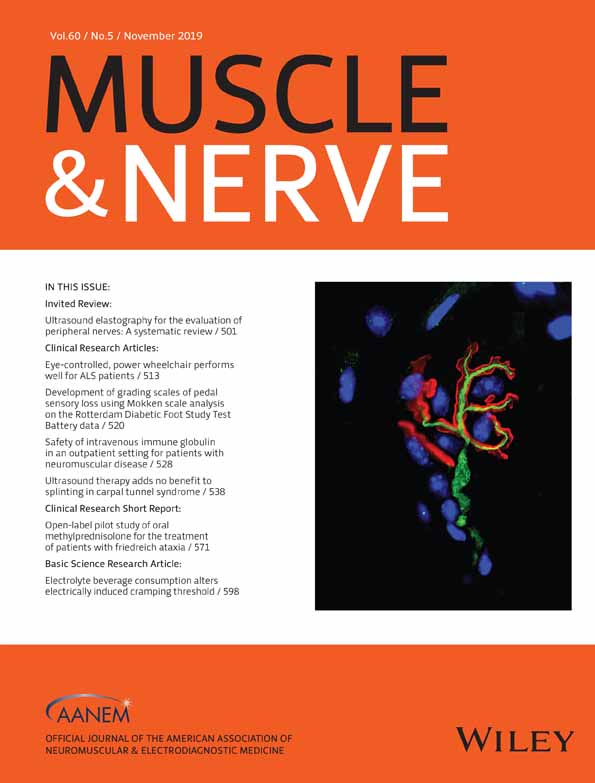Average proportional consecutive interval difference accurately differentiates spontaneous activity from motor unit potentials
Abstract
Introduction
An objective method is required to detect spontaneous activity (SA) for prevalence studies in needle electromyography (EMG). Because of frequent similarities in the morphology of SA and motor unit potentials (MUP), identification of SA depends on assessment of firing regularity, which has not yet been quantitated through a modern interface.
Methods
Prospective recordings obtained from patients referred for electrodiagnostic evaluation were analyzed by using decomposition-based quantitative EMG (DQEMG) customized to calculate descriptive statistics.
Results
Forty-four MUP recordings (39 participants) and 80 SA recordings (62 participants) were analyzed. One hundred one of 124 recordings successfully interfaced with DQEMG. The remaining recordings were analyzed in Audacity. Average proportional consecutive interval differences differentiated SA from MUPs with 97.5% sensitivity (confidence interval [CI] 91.3%-99.7%) and 100.0% specificity (CI 92%-100%). There was substantial overlap, however, for SD and mean consecutive differences.
Discussion
Average proportional consecutive interval difference accurately differentiates SA from MUPs and may be useful in future prevalence studies of SA.
CONFLICT OF INTEREST
DQEMG was developed by Daniel Stashuk, who could benefit from commercialization. All other authors declare no conflicts of interest related to this report.




